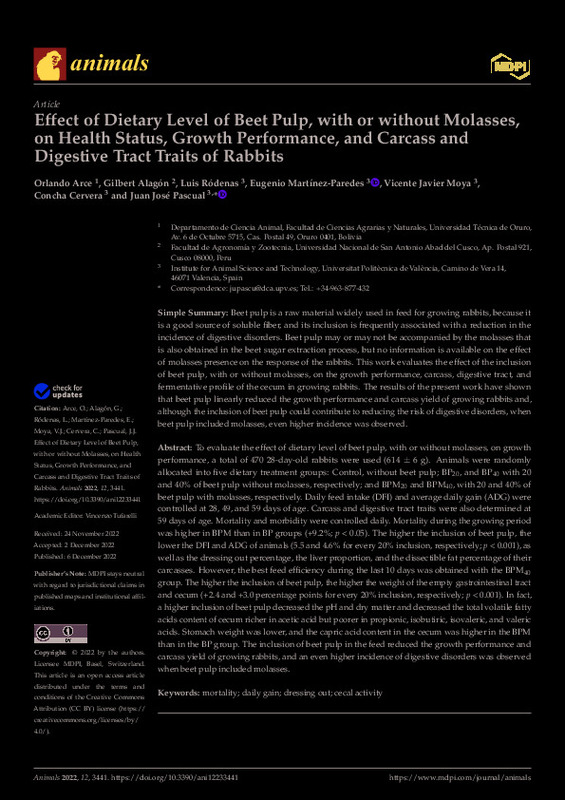JavaScript is disabled for your browser. Some features of this site may not work without it.
Buscar en RiuNet
Listar
Mi cuenta
Estadísticas
Ayuda RiuNet
Admin. UPV
Effect of Dietary Level of Beet Pulp, with or without Molasses, on Health Status, Growth Performance, and Carcass and Digestive Tract Traits of Rabbits
Mostrar el registro completo del ítem
Arce, O.; Alagón, G.; Ródenas Martínez, L.; Martinez-Paredes, E.; Moya, V.; Cervera, C.; Pascual Amorós, JJ. (2022). Effect of Dietary Level of Beet Pulp, with or without Molasses, on Health Status, Growth Performance, and Carcass and Digestive Tract Traits of Rabbits. Animals. 12(23):1-12. https://doi.org/10.3390/ani12233441
Por favor, use este identificador para citar o enlazar este ítem: http://hdl.handle.net/10251/193548
Ficheros en el ítem
Metadatos del ítem
| Título: | Effect of Dietary Level of Beet Pulp, with or without Molasses, on Health Status, Growth Performance, and Carcass and Digestive Tract Traits of Rabbits | |
| Autor: | Arce, Orlando Alagón, Gilbert Cervera, Concha | |
| Entidad UPV: |
|
|
| Fecha difusión: |
|
|
| Resumen: |
[EN] Beet pulp is a raw material widely used in feed for growing rabbits, because it is a good source of soluble fiber, and its inclusion is frequently associated with a reduction in the incidence of digestive disorders. ...[+]
|
|
| Palabras clave: |
|
|
| Derechos de uso: | Reconocimiento (by) | |
| Fuente: |
|
|
| DOI: |
|
|
| Editorial: |
|
|
| Versión del editor: | https://doi.org/10.3390/ani12233441 | |
| Código del Proyecto: |
|
|
| Agradecimientos: |
|
|
| Tipo: |
|









